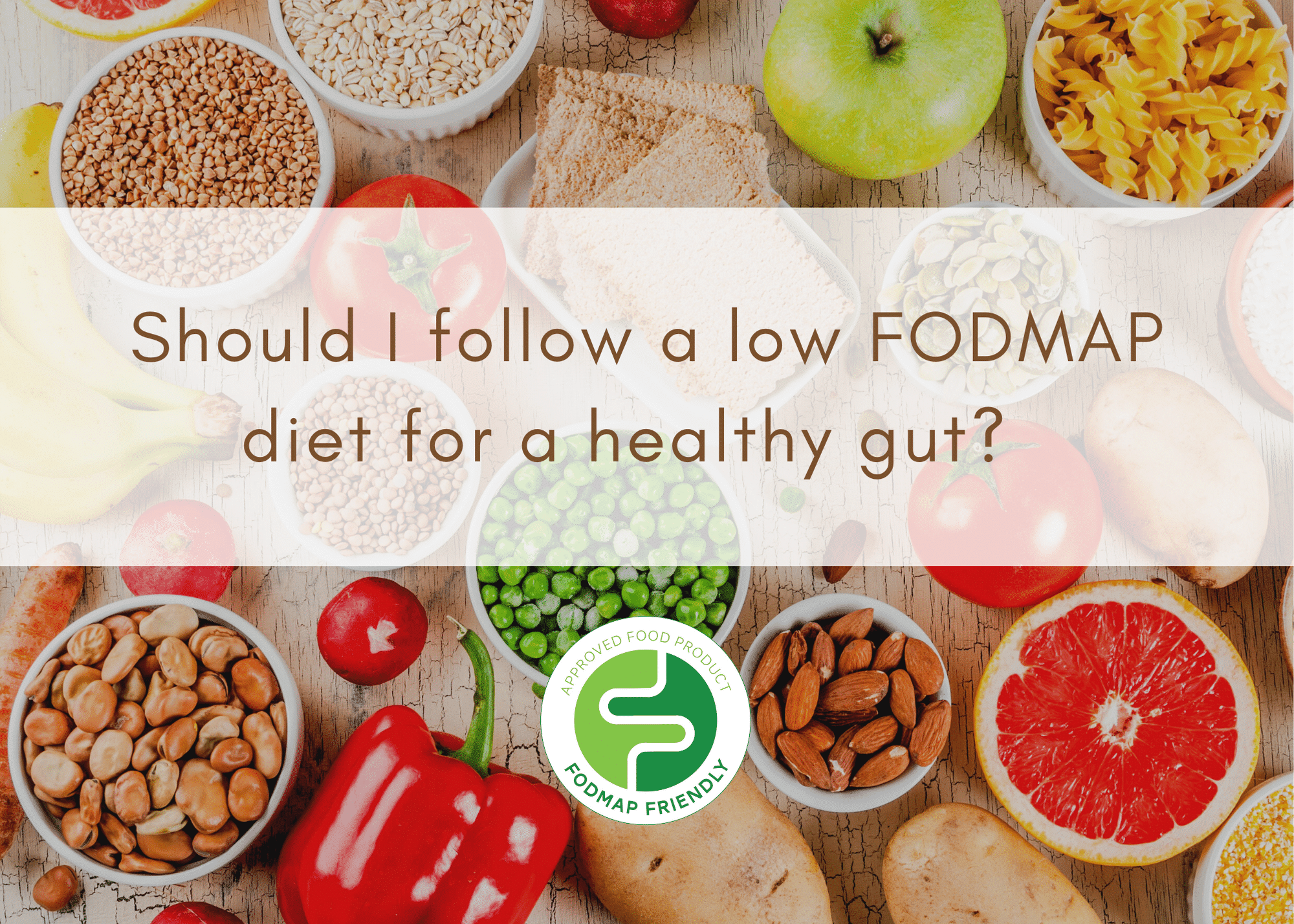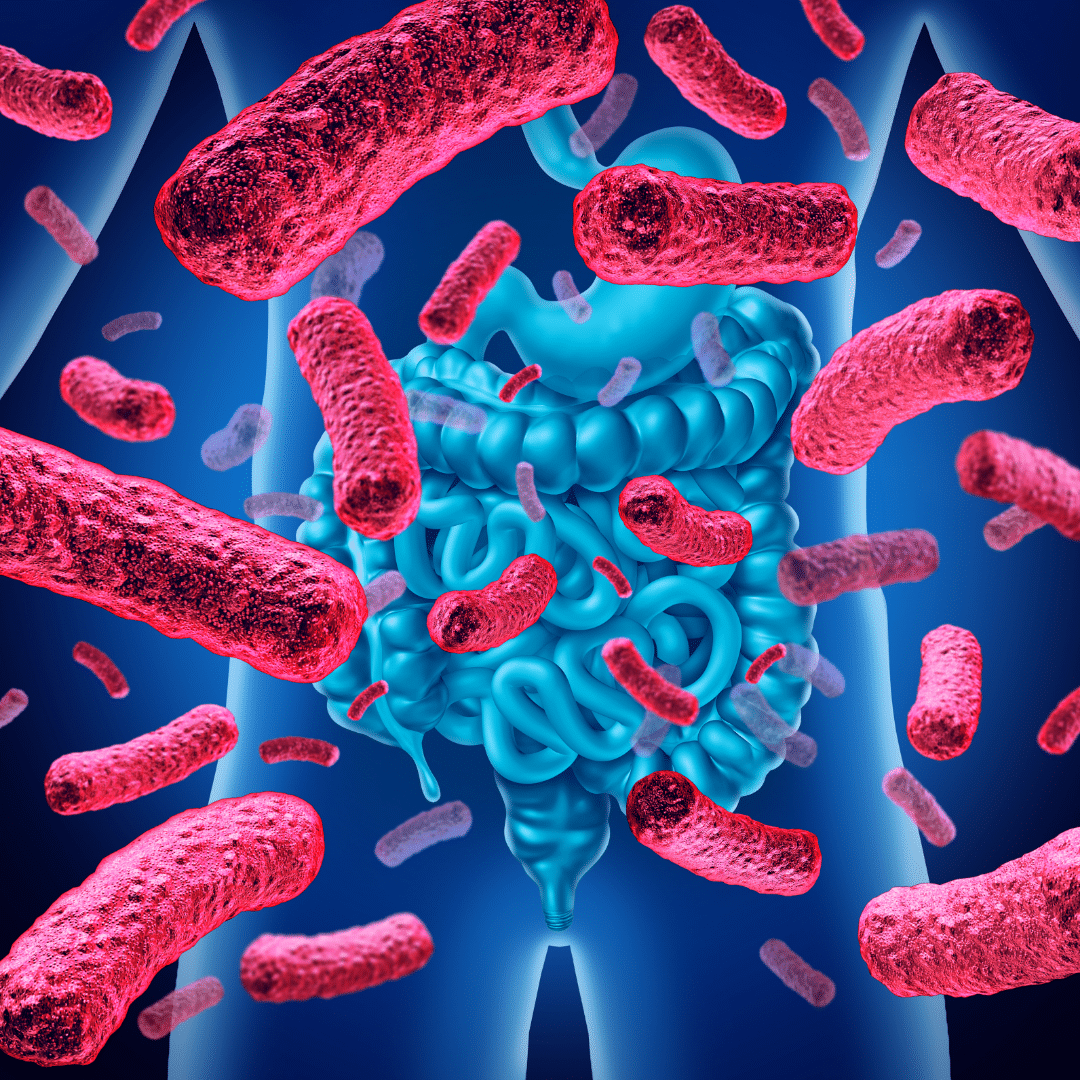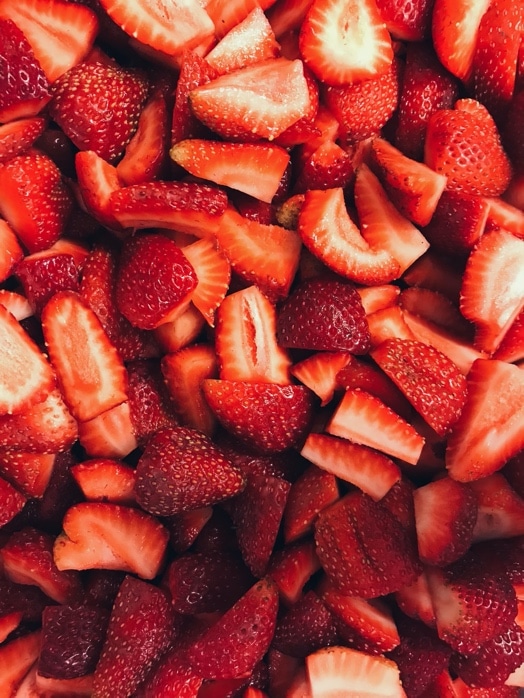Should I Follow A Low FODMAP Diet For A Healthy Gut?
Posted on May 14, 2020

The low FODMAP diet already generates many questions, so when we add the words ‘gut health’ in there, we inherently add another layer of curiosity and potential confusion. Today, we unpack some of the frequently-asked-questions surrounding the low FODMAP diet and gut health.
What is the gut microbiome?
In one sentence, the gut microbiome is the inner universe that resides throughout your gut, but mostly in your large intestine. This community is made up of trillions of microorganisms (mainly bacteria) and their genetic material. The functions that these microbes perform are critical to your health – they help you digest food, absorb nutrients and regulate your immune response. Remember, 70% of our immune system is contained in the gut! They also play a role in processes such as metabolism, body weight and brain function.
Since our gut microbiome is influenced by factors such as our environment, antibiotic use, genetic makeup and diet, the residents of your inner universe will look slightly different even to your siblings, parents or neighbour. Consider your gut microbiome a bacterial fingerprint that is unique to you.
What defines a healthy gut and how can I obtain one?
Since our gut microbiome is unique and there are still many unanswered questions surrounding the microorganisms that occupy this space, it is difficult to give a clear-cut definition of what defines a healthy gut. Like many concepts in the low FODMAP world, ‘healthy’ is hard to measure and it varies from person to person.
However, let’s work with what we have established so far. From a clinical perspective, a healthy gut is one that:
Has fully-functioning ‘barrier arms’ – a healthy gut is effective in keeping the contents of the gut, such as the important microbiota, toxins and undigested food particles from entering the blood stream.
Performs its functions such as the ability to ward off infection, absorb and synthesise nutrients. It works with the rest of the body to ensure you’re functioning at your best.
Is diverse: having many different types of bacteria, or residents in our community, is positive. Gut diversity means your gut is ready for potential challenges and is in a better position to fight infection. If one strain bacteria can’t do its job, a similar one can step in.
Instead of focussing on a specific type or dose of ‘good bacteria’, it is important that we zoom the lens outwards and focus on the broader behaviours that help our gut function optimally and promote this important diversity. How can we do this? Eating a diet full of
different plant foods (such as fruits, vegetables, grains and legumes), getting some movement in each day, finding ways to reduce your stress and having a quality sleep each night are good places to start.
What are the benefits of following a low FODMAP diet for my gut health?
Following a low FODMAP diet for IBS usually leads to a great reduction of processed foods in the diet that carry little to no benefit for our gut. Even if you’re not following a low FODMAP diet, reducing the amount of processed foods in your diet will benefit your gut positively. Additionally, getting on top of your IBS symptoms lead to better digestion overall. This is inherently good for both your gut and quality of life.
How can the low FODMAP diet be detrimental to my gut health?
Even though the gut may benefit from a low FODMAP diet to some extent, many high FODMAP foods actually promote good gut health because they are prebiotics. Prebiotics are a type of non-digestible fibre that pass through out gastrointestinal tract undigested and act as food for our good bacteria.
Examples of prebiotic, high FODMAP foods are onion, garlic, artichoke, asparagus, legumes and wheat. These foods are typically removed when completing the elimination phase of the low FODMAP diet.
Remember when we talked about variety before? Following a low FODMAP diet also reduces the variety of plant foods we consume, simply because many fruits and vegetables can contain FODMAPs that trigger IBS symptoms.
Why is the ‘challenge’ phase of my low FODMAP diet important?
Following a low FODMAP diet is a diagnostic tool, not a forever diet. It is important to remember that the ‘elimination’ phase is designed to set you up to complete the just-as-important ‘challenge’ phase.
By completing the challenge phase, you will ensure that you are not unnecessarily restricting FODMAPs that do not actually trigger your symptoms. Or else, you might actually be ‘robbing Peter to pay Paul’ – relieving your gut symptoms, but unintentionally starving some of your good bacteria by not feeling them these prebiotic-containing foods.
Deciding whether or not to avoid prebiotic FODMAP foods comes down to your established tolerance level after completing the low FODMAP challenge phase with a dietitian. A FODMAP specialist dietitian will help you establish which exact foods trigger your symptoms and what your individual threshold is. Through challenging your thresholds, you may be able to reintroduce some of these beneficial prebiotics and plant diversity back into your diet.
How do I follow a low FODMAP diet while ensuring I am eating well for my gut?
You can still meet your nutritional requirements and eat well for your gut on a low FODMAP diet. Here are some suggestions:
Focus on fibre: incorporate low FODMAP foods that are good sources of fibre into your diet. Examples include oranges, raspberries, strawberries, green beans, spinach, carrots, oats and brown rice.
Look for the FODMAP Friendly certification: take advantage of FODMAP Friendly certified foods that are also good sources of fibre. Browse certified foods by category here.
Here are some fantastic FODMAP Friendly certified fibre supplements:
- Kfibre: a complex prebiotic fibre sourced from whole fresh sugarcane. Available from select pharmacies in Australia and online.
- CanPrev Fibre Feel: fibre sourced from the acacia plant that can be purchased from health stores across Canada and selected online retailers.
- MSPrebiotic: a supplement grade resistant starch from potatoes grown and packaged in Canada. Available in multiple stores across Canada.
- Casa De Sante Pre & Probiotic: a gentle formula that contains a type of fibre and bacillus coagulans strain. A product of the United States but also ships worldwide.
- Inavea: sustainably made from pure acacia and available online.
- Blackmores Probiotics + IBS Support: a ‘double whammy’ probiotic and prebiotic available in pharmacies across Australia and online.
Most importantly, complete the ‘challenge’ phase of your low-FODMAP diet to ensure you are not unnecessarily restricting FODMAPs that you aren’t intolerant to.
In summary
The gut microbiome is the inner universe of microorganisms that reside in our gut. A healthy gut looks different in everyone but consists of the gut being able to perform its functions and containing a diverse number of bacterial species. So, do you need to be following a low FODMAP diet to have a healthy gut? No – in fact, the low-FODMAP diet inherently removes plant variety and some of the prebiotic foods that ‘feed’ our gut microbiota, so it is very important that you complete the ‘challenge’ phase of the diet with a dietitian. Together, you can establish your individual tolerance levels to high FODMAP, prebiotic foods and make sustainable changes that will be good for your overall health, including that of your gut.
Written By: Charlotte Barber (Student Nutritionist)
Reviewed By: Charmaine Duong (Dietitian)












